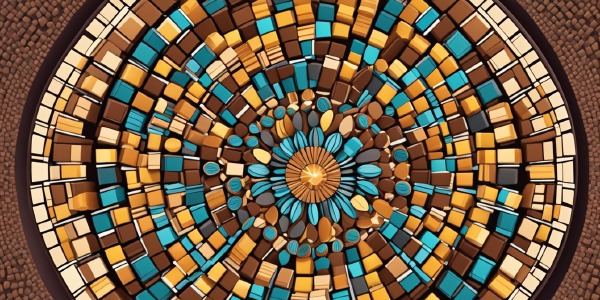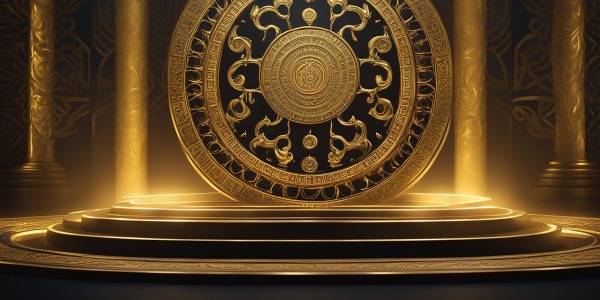Mandala Tattoos: Unveiling Their Spiritual Significance and Beauty
Mandala tattoos have captivated the attention of body art enthusiasts worldwide due to their intricate beauty and layered meanings. Rooted in ancient traditions, these designs are much more than just visually appealing; they serve as a representation of the universe and personal wholeness. The practice of inscribing mandalas onto the skin honors a longstanding cultural ceremony, transforming the body into a canvas for spiritual and artistic expression.
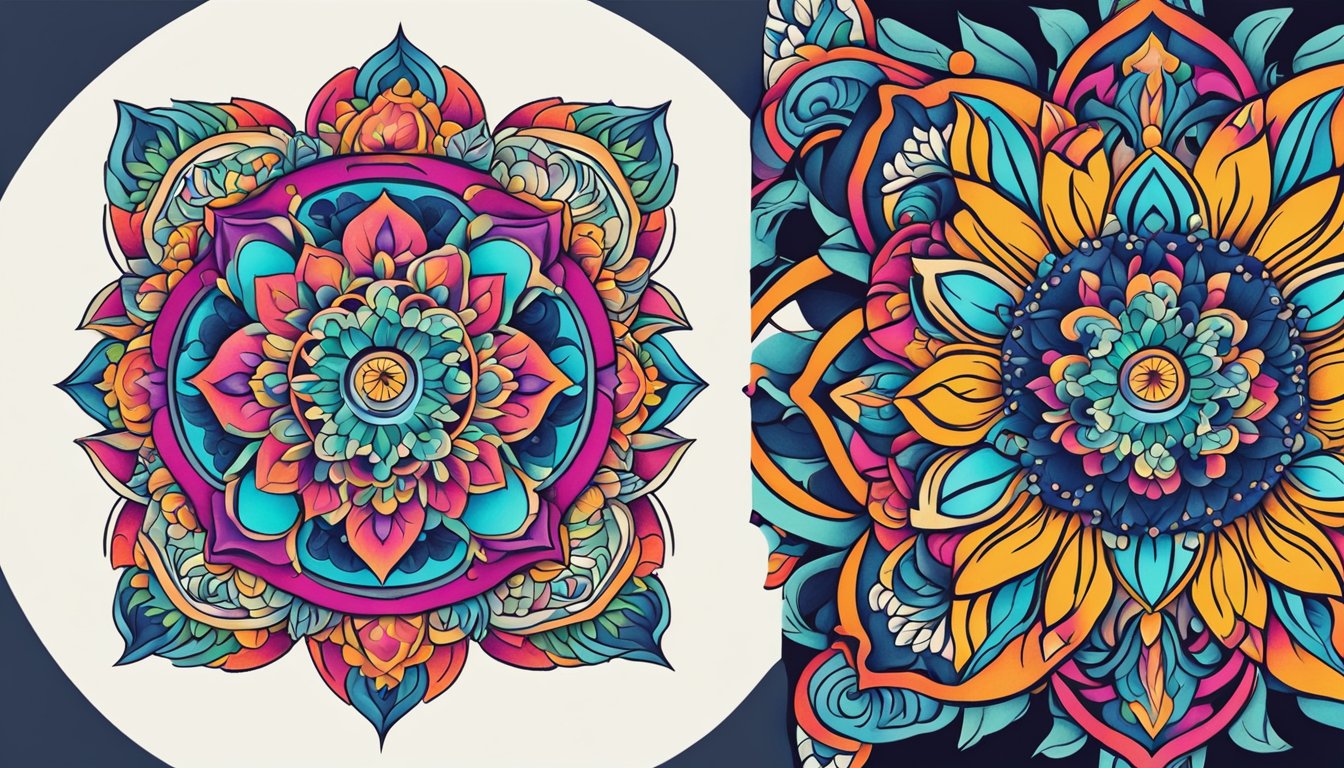
Whether a person chooses a mandala tattoo for aesthetic pleasure or for its symbolic journey, the design provides endless possibilities. Each pattern tells a unique story, with circles and geometric shapes coming together to symbolize harmony and eternity. Today, these tattoos are not only a nod to their historical significance but also a testament to the individual’s search for balance in an ever-changing world. Just as no two mandalas are identical, each tattoo reflects the personal significance and creativity of its wearer.
Selecting the perfect mandala tattoo involves understanding its purpose and meaning, as well as ensuring that it aligns with the wearer’s personal values. Additionally, the meticulous nature of these designs demands a skilled artist to bring the complex patterns to life. Post-tattoo care is equally essential, as preserving the intricacy and color of a mandala is crucial to maintaining its beauty and relevance over time.
Key Takeaways
- Mandala tattoos are steeped in cultural significance and personal symbolism.
- Each design is unique, reflecting the individuality of the wearer.
- Careful consideration and aftercare are integral to the tattoo’s longevity.
History of Mandala Tattoos
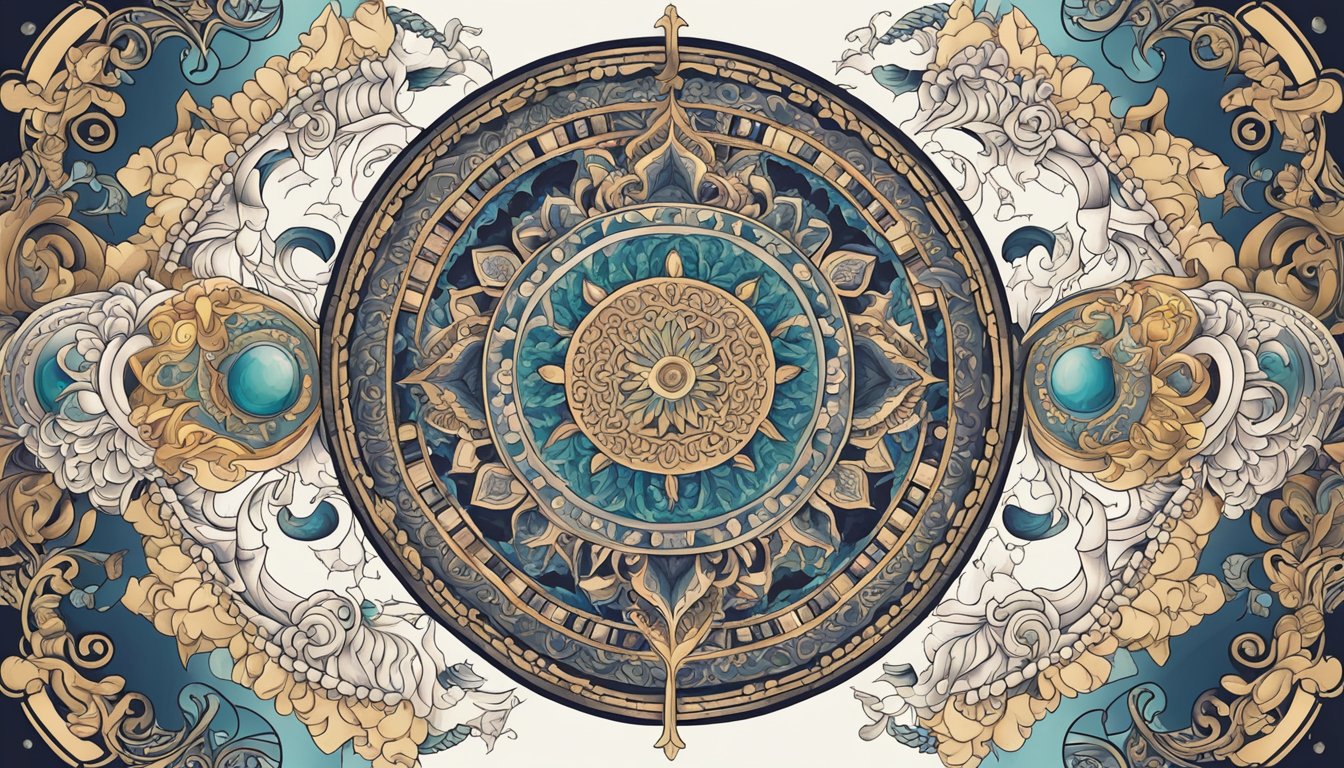
Mandala tattoos have a profound heritage, tracing back centuries. The term ‘mandala’ is derived from Sanskrit, meaning “circle” or “center.” These designs are not just beautiful artworks; they are deeply steeped in cultural and spiritual significance.
Initially, mandalas were used in religious rituals and as meditation tools in Hindu and Buddhist traditions. Tibet, India, Nepal, China, Japan, Bhutan, and Indonesia are some of the Asian countries where the creation of mandalas was not just an art form but part of their spiritual practice from the fourth century onwards. They signify balance, eternity, and perfection—echoing the belief that everything is connected and life is never-ending.
Mandala tattoos carry the cultural thread forward, embedding historical significance into their intricate patterns. The Native Americans also used circular designs that closely resemble mandalas in their art, attributing different meanings such as dreams or visions to their work.
In modern times, mandala tattoos have become a popular choice for those seeking body art that represents wholeness and cosmic harmony. The versatility of mandala designs allows them to be incorporated into various tattoo styles, which adds to their growing popularity. Tattoos of this nature are often detailed and can entail a single, standalone design or a series of interwoven patterns to form a more intricate composition.
By choosing mandala tattoos, people today connect with an art form that has been meaningful to numerous cultures throughout history, acknowledging its rich past while adapting it to their personal expressions and aesthetic preferences.
Design and Symbolism of Mandala Tattoos
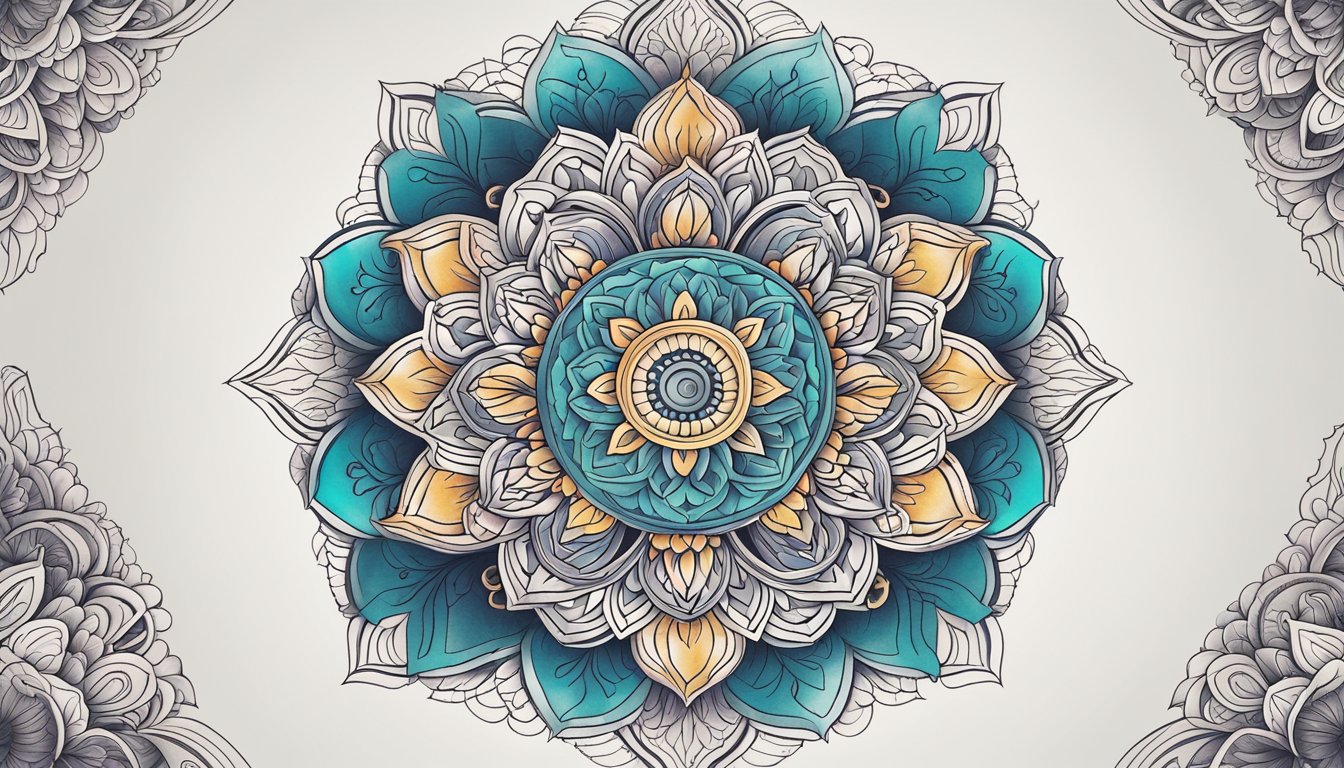
In the intricate world of body art, mandala tattoos stand out for their deep symbolism and mesmerizing patterns. They embody a rich heritage of spiritual significance and are often celebrated for their aesthetic harmony and precision.
Cultural Significance
Mandalas have a profound spiritual and ritual importance in various cultures, especially within Hinduism and Buddhism, where they are regarded as a map of the cosmos and an aid to meditation. The circular nature of these designs is believed to represent the universe, life’s eternity, and the idea that life is never-ending. Artists and wearers often choose mandalas for their symbolic representation of balance, harmony, and unity. These tattoos can serve as a personal emblem of one’s journey towards spiritual enlightenment.
Common Themes and Patterns
Mandala tattoos are characterized by their geometric patterns, with a circle commonly at the center, reflecting the wholeness and perfection of life. Common themes in these designs include layers of intricate petals, dots, and various shapes that radiate from the center, symbolizing the complexity of the universe and the interconnectedness of all things. The knee is sometimes chosen as a placement for its natural round shape, aligning with the traditional circular form of a mandala, despite being a more painful location for a tattoo. Floral mandala tattoos often combine the symbolism of flowers with the structured beauty of mandalas, creating a visual metaphor for femininity, growth, and the bloom of new ideas.
Choosing Your Mandala Tattoo
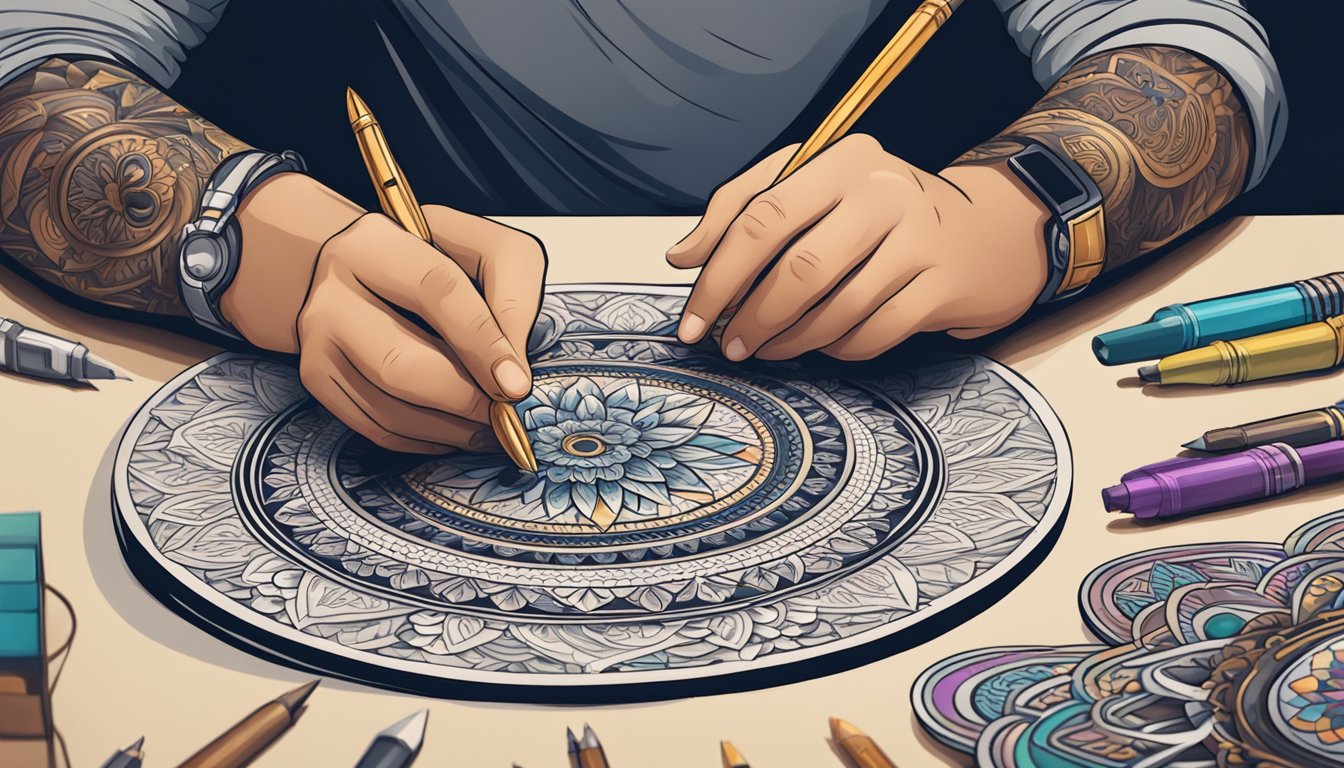
When selecting a Mandala Tattoo, a person should consider both where on their body the tattoo will be placed and how they can personalize the design to make it truly unique.
Placement Considerations
- Visibility: A person must decide how visible they want their tattoo to be. For instance, a Mandala Hand Tattoo can be more visible, allowing them to display their tattoo’s intricate designs easily.
- Size and Detail: The size of the mandala and the complexity of its design should suit the body part. Larger areas can accommodate more detailed mandalas.
| Placement Options | Attributes |
|---|---|
| Hand | Highly visible, suits smaller mandalas |
| Shoulder | Can be hidden, ideal for circular and large designs |
| Back | Ample space for intricate work, less visible |
| Wrist | Small surface, visibility varies |
| Ankle | Subtle placement, good for small to medium designs |
Personalization and Custom Designs
- Color and Style: An individual may choose to incorporate colors or various styles into their mandala to make it stand out. For example, adding floral elements or mixing it with other symbols that carry personal significance.
- Symbolism: Mandalas carry deep symbolic meanings, so a person may pick elements that resonate with their life philosophy or represent their journey. The beauty and balance of a mandala can be tailored to match the wearer’s intentions.
Mandala Tattoo Aftercare
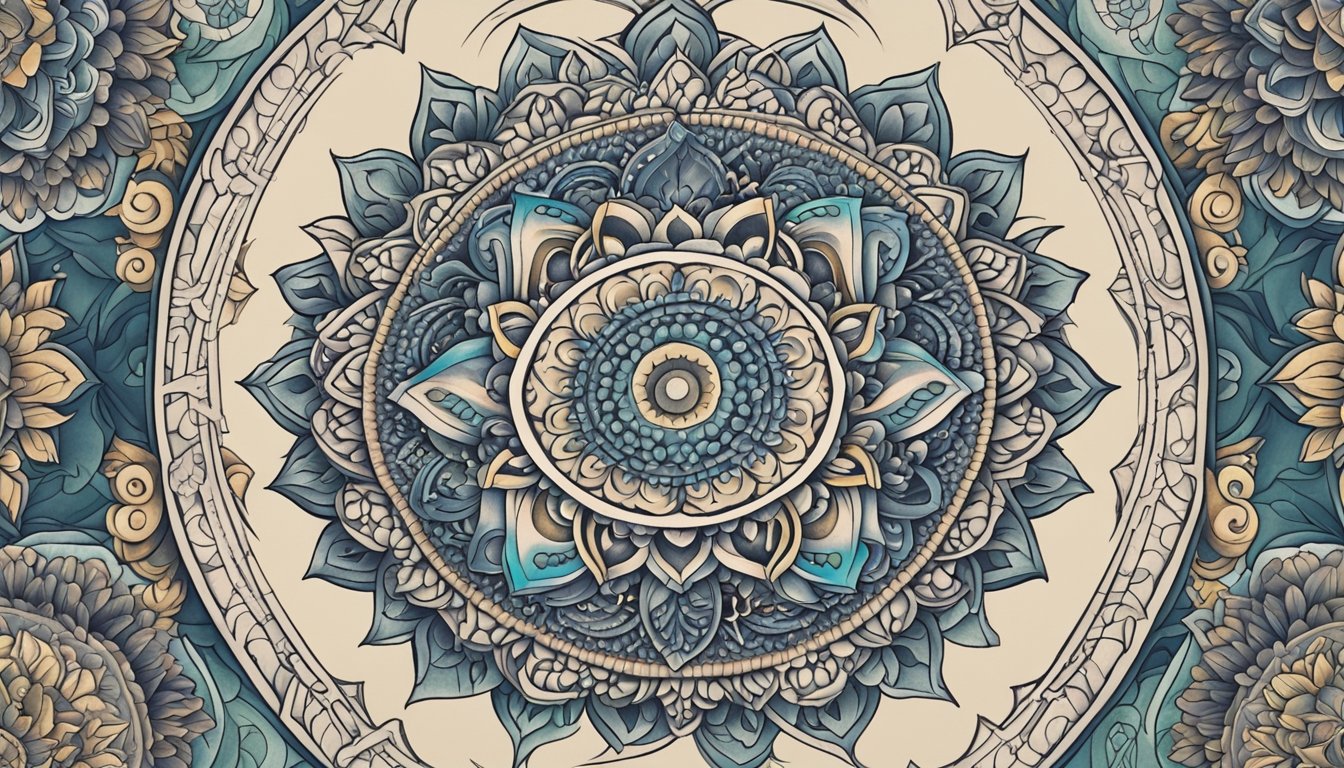
Proper aftercare is crucial for the healing and longevity of a mandala tattoo. They should focus on cleanliness and protection in the immediate phase and maintain the tattoo’s vibrancy long-term.
Immediate Aftercare Tips
- First 48 hours: They should gently clean the tattoo with fragrance-free soap and pat it dry. Applying a thin layer of antibiotic ointment can aid in the healing process.
- Bandaging: Most artists recommend keeping the tattoo covered with a sterile bandage for the first few hours.
- Moisturizing: A non-scented, alcohol-free lotion should be applied to keep the skin hydrated.
Long-Term Care and Maintenance
- Sun Protection: Continuous exposure to the sun can fade the tattoo. They should use SPF 30 or higher to shield the skin.
- Hydration: Regular moisturizing keeps the tattooed skin from drying out and helps maintain clarity.
- Touch-ups: Especially for intricate designs like mandalas, they may eventually need a touch-up to keep lines sharp and colors vibrant.

